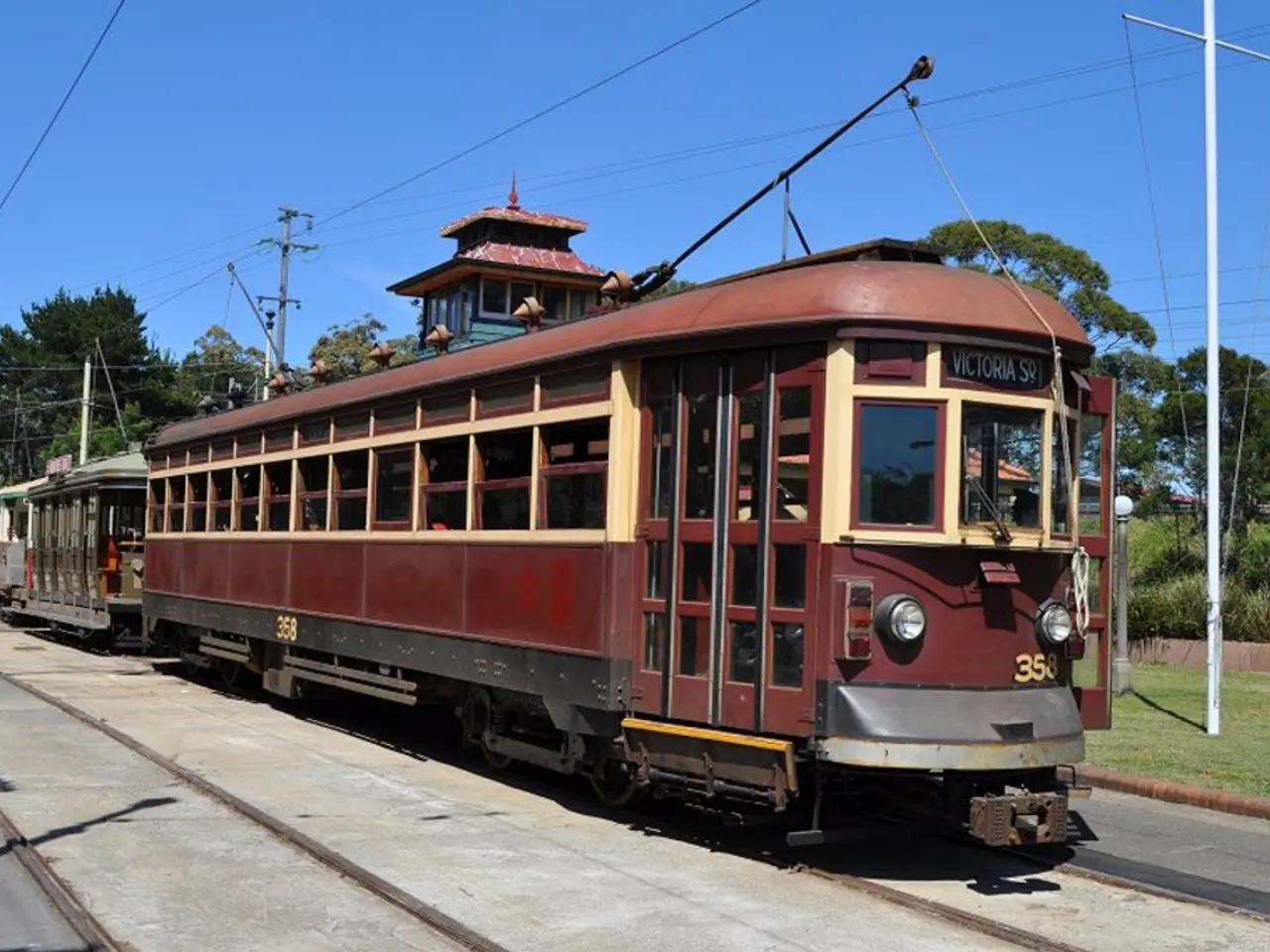Road construction on the Zeithain-Leckwitz stretch completed by Deutsche Bahn
Headline: DB InfraGO Accelerates the "Strong Rail" Strategy with Leipzig-Dresden Line Expansion
The Leipzig-Dresden upgrade line project, part of the S3 program for the structural renewal of Deutsche Bahn (DB), is making significant strides in enhancing the railway network. This expansion forms a solid foundation for the "Strong Rail" strategy, aiming to increase the number of passengers and the market share of the climate-friendly train.
One of the key developments is the expansion of the Zeithain-Leckwitz section, which has been completed by German Rail (DB). This expansion includes the construction of a third track and optimisation of the track layout in the Röderau/Zeithain area. The project team is working diligently to reduce travel time between Leipzig and Dresden from over 90 minutes to under an hour.
Additional switches have been added to provide more flexibility in train operations, and both tracks in Glaubitz and road crossings at Bahnhofstraße and Poststraße have been modernised and replaced with railway bridges. This modernisation contributes to making DB more sustainable and efficient.
The expansion also includes the implementation of the European Train Control System (ETCS) in 2028, starting with the Zeithain-Leckwitz section. The ETCS, which improves safety and efficiency by enabling continuous train control and interoperability, is expected to be integrated with these upgrades.
Construction teams are set to begin work on the modernization of the Riesa railway node, the penultimate section of the Leipzig-Dresden expansion, in 2029. This modernization includes the Dresden Hbf crossing structure and further infrastructure updates.
Further information about the Leipzig-Dresden upgrade line project can be found at [https://www.db.de/]. The project aims to support the realization of the Germany timetable and make DB more punctual, reliable, and profitable.
The expansion of the Leipzig-Dresden line also includes the modernisation of halting points like Glaubitz and Nünchritz, making them barrier-free. This modernisation allows trains to potentially travel at speeds of up to 200 km/h in the future.
As of mid-2025, the Leipzig-Dresden line section near Riesa has seen speed upgrades to 160 km/h, implying modernisation. The exact completion dates for ETCS on this line and Riesa node modernisation are not explicitly given in the current sources, but progress in modernising the railway node and signalling systems likely compatible with ETCS standards is evident.
For updated project schedules on ETCS and Riesa node modernisation beyond July 2025, further details may be available from Deutsche Bahn or the Federal Railway Authority.
- The incorporation of the European Train Control System (ETCS) in 2028, as part of the Leipzig-Dresden line expansion, aligns with DB's strategy to enhance the efficiency and safety of the finance and transportation industries, particularly the automotive sector.
- The modernization of halting points like Glaubitz and Nünchritz, as part of the Leipzig-Dresden line project, not only prioritizes accessibility but also sets the stage for potential high-speed travel, which could positively impact the automotive industry by reducing travel time and encouraging the use of greener transportation methods.




